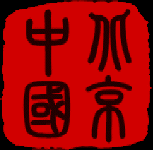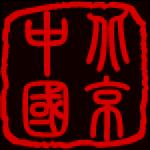A
Brief History of China
Part 2 : Republic of China (1911 - 1949)
Sun YatSen was declared president of the
new Republic of China in 1911.
His leadership of the
Nationalist Party, or KuoMinTang,
lasted only 2 years. In 1913, he stepped down and
retreated from the political spotlight under pressure
from the military leader Yuan ShiKai.
Yuan's death in 1916
plunged China into a warlord era, which was to last until
1927.
Sun YatSen returned to
politics during this time to form a southern Kuomintang
government, which exercised nominal control over parts of
the south in the 1920s.
Despite the infighting
between regional warlords, this was an era of
intellectual development, especially in the realm of
political thought. Traditional Confucian ideology was
largely abandoned in favor of new liberal westernised
strains of political thought. Students, for the first
time in China, began to play a part in the political
development of their country.
However, infighting
among the warlords created a situation in which
incursions by foreign powers, most notably the Japanese
could not be stemmed.
On May 4, 1919, 3,000
students from Beijing University converged in Tiananmen
Square to protest the terms of the Treaty of Versailles.
This treaty, signed at the end of World War II, did
nothing to stem Japanese aggression in China or to
eliminate the unequal treaty system. The 'May Fourth Movement', as the demonstration is now
remembered, was taken up by students and sympathizers all
over the country.
In this climate of
protest, change and intellectual development, some turned
their attention to Communism as a political ideology. In
1921, the Chinese Communist Party (CCP) was founded. The
founders included, Chen
DuXiu, one of the
student leaders of the May Fourth Movement, Mao ZeDong, and Zhou Enlai. The group received advice and
guidance from Russia.
In the early 1920s, the
greatest threat facing China, aside from internal
fighting among the warlords, was Japanese aggression. In
order to have the strength to rebuff a Japanese invasion,
China had to be united in her desire to stem the Japanese
tide.
To achieve this end,
two ideologically different parties - the newly founded
CCP and the KuoMinTang (KMT) joined forces. They formed
their First United Front with their forces making up the
National Revolutionary Army (NRA). In 1926, the NRA
launched the Northern
Expedition to
subdue the remaining warlords. The campaign was a
success.
The common goal uniting
these two forces was a sense of nationalism. The United
Front was not, however, to stay united - Chiang KaiShek, a violently anti-Communist
military commander, succeeded Sun YatSen in 1925 as head
of the KMT.
Towards the end of the
Northern Expedition, as Chiang's forces were poised to
capture Shanghai, communist workers inside the city who
had been clandestinely organized by Communist Party
leaders seized the city. When Chiang's forces entered the
city his desire to rid his ranks of the Communists was
made abundantly clear. Thousands of communists were
massacred, purging the majority of the original communist
party founders.
Thereby the communist
voice in the alliance was almost silenced and the facade
of the United Front crumbled. Chiang declared himself
head of the new national government in 1928. His
government was effectively a military dictatorship with
only a small popular power base. Uninterested in reform
or the extreme poverty that the majority of the
population faced, Chiang's government represented the
elite.
Shocked by Chiang's
sudden and treacherous purging of their ranks, Communist
Party members regrouped in guerilla bases in the
countryside. The principle communist base, commanded by
Mao ZeDong, was in JiangXi Province. Mao recruited cadres
from the poverty stricken peasants and workers to form
his Red Army. The Red Army managed to rebuff the constant
attacks by Chiang's forces that were under orders to
exterminate them.
In 1934, Chiang
organized what was to be his last extermination campaign
against the Red Army. He encircled their base in JiangXi
province with 500,000 troops, concrete and barbed wire.
With no choice but to retreat in the face of such vastly
superior numbers and armaments, Mao organized the retreat
that has come to be known as the Long March. The year long 9,500 km (5,890
mile) trek across some of China's most daunting mountain
ranges and grueling terrain, took the lives of some
60,000 through hunger, cold and battle.
The Long March has
assumed something of mythic proportions in Communist
Party history. By the time the Communists reached their
new base at YeNan in northern ShanXi province in 1935,
Mao was the undisputed head of the Party. Dependency on
Russia had been severed.
Until his death in
1976, Mao's closest comrades and his most loyal followers
were those who had withstood the trial of the Long March.
The Long March also
served as a massive advertisement for the CCP. The Red
Army liberated the peasants along their route,
instituting land reform and spreading the message of
communism.
Unlike their KMT
counterparts, who lived off the land, the Red Army troops
were forbidden to take anything from the peasants without
paying. This order was enforced. Not only did thousands
become aware of their existence when the Red Army marched
through, but the difficulties they faced along the way
and the respect they showed those they met, earned the
CCP immense respect.
While Chiang's armies
spent their time chasing after the Red Army, japanese
forces invaded Manchuria (1933) and set up 'Manchukuo'.
They installed Pu Yi, the last emperor of the Qing
dynasty, as a figurehead.
In light of the
imminent threat of a japanese invasion, Mao wrote to
Chiang that he advocated an end to the civil war, in
order to concentrate on the common enemy. However, Chiang
was convinced of the necessity of a Second United Front
only after being kidnapped by his General in Manchuria.
The General urged that a unified force was the only way
to oust the japanese. In the incident that became known
as the Xian
Incident, Chiang
was only released on the condition that he would support
a unified stance against the japanese.
Despite a united front
against them, the japanese, who invaded China proper in
1937, made huge inroads into China and 95% of the
population was under japanese rule in little over a year.
The japanese occupation
of China was extremely brutal. The Rape of Nanjing in which 20,000 women were
raped and 330,000 civilians killed, is the most shocking
incident of this brutality.
During the japanese
occupation, the Communists organized in the countryside,
building a huge resistance network. Communist forces
continually harassed the japanese army. Despite the
supposed United Front, Chiang continued to favor hunting
down the CCP forces. In contrast, the CCP earned great
popular support for their aggressive stance against the
japanese.
The end of World War II
in the Pacific heralded the japanese surrender in China
in 1945. The end of the war with Japan also signaled the
end of the Second United Front. Despite attempts to
broker a peace agreement, full-scale civil war broke out
between the CCP and KMT in 1947.
Although
technologically inferior, the CCP managed to win
successive battles against the corrupt KMT. In 1948, Red
Army forces began their final assault on the KMT.
In 1949, just before
the liberation of Shanghai by the Communists, Chiang,
along with many of the KMT's top leaders, fled to Taiwan.
On October 1 1949, Mao
ZeDong proclaimed the formation of the People's Republic
of China from the rostrum of Tiananmen Gate in Beijing.
Next : People's
Republic |



